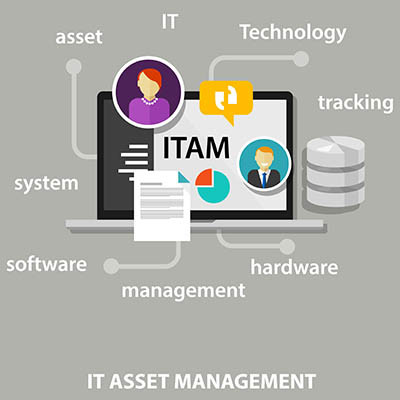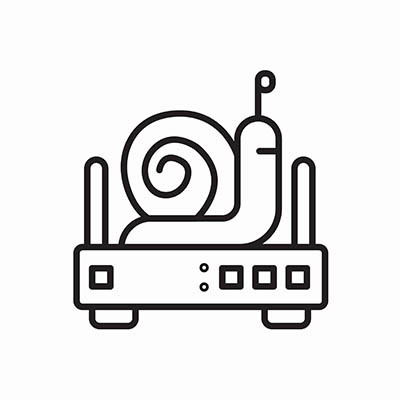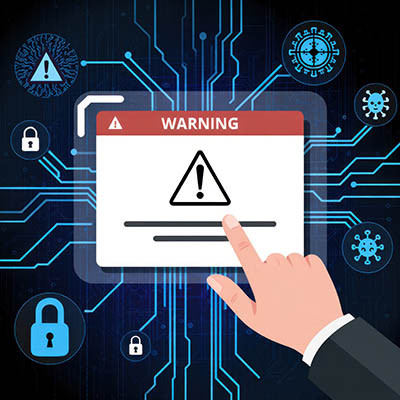We’ve seen our fair share of convenience vs. security trade-offs, but few consumer devices sit at the center of that Venn diagram quite like the Ring camera. To the average user, it’s a doorbell that significantly reduces package thieves. To those of us that work with technology, it’s a sophisticated Internet of Things (IoT) sensor with a direct, persistent uplink to one of the world’s largest cloud infrastructures.
Network Integration Specialists, Inc. Blog
The holiday season isn’t usually a time we like to spend dwelling on unpleasant things, but unfortunately, cybercrime is so prevalent that we cannot afford to ever let our guard down. What we can do, however, is tell a (somewhat) happier story that nevertheless reminds us what to keep an eye out for.
As such, please enjoy our version of a lesser-known Charles Dickens story.
You've heard the grumbling, seen the memes, and probably even felt it yourself: that vague, all-powerful entity known as the algorithm. It's blamed for everything from political polarization to your inexplicable obsession with people eating military rations. What exactly is it, and what digital giants are pulling its strings?
You want to know what’s scary? Anytime your company’s IT fails and you’re left wondering if you can afford a new piece of hardware or the maintenance to fix what’s broken. When you rely on break-fix IT, you’re basically living in a horror film; you never know when the slasher is going to leap out of the shadows and strike. With managed IT, you can sidestep the scaries and know with confidence you’re taking care of your business’ future.
Here are three reasons why managed IT is the superior option for managing your technology solutions.
Is your business technology a source of uncertainty and frustration? Are you constantly reacting to IT problems when you would prefer to proactively leverage technology to drive your business’ growth? This struggle is often the result of the Executive IT Gap, a phenomenon that traps businesses in an endless cycle of reactive, costly, and inefficient technology decisions that slow down growth.
Does this sound familiar? Your business is growing, but you haven’t changed your server hardware since you began operations. It’s hindering growth at this point, and you don’t know what to do. The best solution out there is to turn to the cloud. With the right implementation of a cloud-first model, you can effectively future-proof your business so it can grow unhindered.
You invested in technology to support your business, spending time and money to acquire and implement it. What happens if that technology turns out to be a lemon… a high-priced item that’s ultimately a dud, or at the very least doesn’t mesh with your future plans?
This is often the result when tech is purchased to fix a short-term issue without a long-term strategy, and ultimately means that the purchaser loses money and productivity due to incompatibility issues. Alternatively, planning a strategic roadmap for your IT to follow helps ensure your investments actually advance your business’ future.
With the holiday season just around the corner, you’ll be spending a lot of time on the Internet trying to find the perfect gifts for the loved ones in your life… but do you actually know how to find exactly what you’re looking for? Today, we want to give you a holiday gift in the form of a guide on how to make the most of Google’s search functionality.
Most of us have at least heard that an ounce of prevention is worth a pound of cure. In other words, proactivity is pretty much always the better strategy. Despite this, we’ve observed that many businesses still avoid investing in their IT until something breaks—the exact opposite of proactivity—and wind up losing in terms of downtime, recovery time, and reputation, along with the financial implications these factors introduce.
This is precisely why we’ve designed our services to serve as preventative measures against the root causes of downtime, helping you be more proactive and reduce overall costs.
How much control do you really have over your IT assets? Oftentimes, businesses will consider other priorities, like sales, operations, and customer service, before they focus on IT systems and resources. The problem with this is that it creates a significant burden for your business, both in terms of the hidden financial drains and serious security vulnerabilities that undermine your business’ stability.
Building a gingerbread house is a perennial tradition in many, many households. Those with experience know that precise, careful preparation leads to a successful, long-lasting final product, while rushing and cutting corners usually leave you with a crumbling, fragile mess.
Much of the same can be said of your business’ data. This essential operational resource is terrifyingly susceptible to a litany of threats and issues that could easily bring your processes tumbling down… hence, why the 3-2-1 Backup Rule is a core element of successful business continuity.
Let’s take a moment to consider the recipe for a reliable, disaster-proof backup, and how it aligns with the process of making a gingerbread house.
Technology works wonders for business, but it also enables other organizations, like law enforcement. We aren’t here to argue ethics, but we would like to touch on some of the technology that certain agencies are using in the execution of their jobs. Specifically, we want to highlight the issues involving the very sophisticated AI and data-mining platforms, such as those developed by Palantir.
We all have too many accounts nowadays. Between our personal lives, work, and practically all the entertainment we consume, there are dozens to keep track of and manage… and then there are the ones that charge us for a service they offer. The stacking costs of these services are bad enough, but if you see them start to double or even triple in a given month, you may be experiencing a common problem that is simple enough to solve.
To do so, we need to clarify the difference between creating an account and logging in.
It’s a symbol that we’ve all become familiar with in recent years: three horizontal lines, representing the menu of whatever application or website is currently in use. Sometimes appearing as three dots, this little icon can be surprisingly important for both the end user and the business using it… especially now that mobile devices are so commonly used for browsing (early this year, 64% of all website traffic was observed to come from these devices).
Here's a horrifying thought: Imagine your beautiful office has 50 hardworking employees... but only one tiny, single-stall bathroom. It's chaos. There's a line down the hall, all day. Productivity grinds to a halt. It's a classic bottleneck, and it’s completely unnecessary.
Here's the hard truth: This is exactly what’s happening to your business’ data right now. You’re paying your ISP for a super-fast Internet connection, but you’re forcing all that crucial business data through a flimsy, $50 consumer-grade router; you’re going to find out it’s not up for the job.
Bring Your Own Device (BYOD) is a solution that has grown more popular over the past decade or so, primarily because more employees already own devices capable of running work-related applications. The employee gets to use a device they already know and love, while the employer saves money from the cost of equipping that employee. That said, the security risks associated with BYOD can undermine an ill-prepared implementation and open the door to potential legal action.
Have you ever considered investing in smart technology for your office? We’re talking, of course, about the smart appliances, lights, thermostats, and so on, all of which make your office feel like you stepped into a sci-fi movie. As IT experts, it would be wrong for us to let you implement all these shiny new solutions without considering the security implications.
Our question to you is this: are you willing to leave glaring security weaknesses in your infrastructure for the sake of being considered “high-tech?” We hope the answer is an emphatic “no.”
When an employee leaves your business, they go through (or they should, at least) a comprehensive offboarding process where you collect their keys, laptops, and other assets you gave them to do their jobs. You may have collected these physical keys, but certainly not their digital keys. You might still see them pop up in the instant messaging app, or you might find recent activity from their account in your shared drive, all of which is problematic.
If you’re not careful, ex-employees might still be using company resources for their own personal use, and this can create a serious security risk for your business—not to mention the legal ramifications should anything bad happen.
Cryptocurrency has brought about innovative new technology for use in the business world, but it’s also created more headaches, primarily due to ransomware. With ransomware, a malicious entity can lock down your computer files and demand a cryptocurrency ransom in exchange for your data’s safe return. So, why is cryptocurrency the chosen currency for these kinds of transactions?
Every day, your small-to-medium business handles sensitive information: customer names, credit card details, employee records, and vendor contracts. This data is valuable, not just to you, but to the hackers and regulators who are paying attention. The old idea that "only big companies get audited" is completely outdated. Data privacy compliance has moved from a niche legal issue to a core operational requirement for every SMB owner and manager.




















